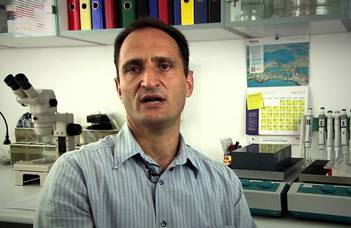Nusser Zoltán (Institute of Experimental Medicine, HAS):

2018. március 22. 15:00 - 16:00
ELTE Lágymányos Campus, Northern Building, 0.81 (Ortvay lecture hall)
2018. március 22. 15:00 - 16:00
ELTE Lágymányos Campus, Northern Building, 0.81 (Ortvay lecture hall)
Molecular mechanisms underlying complex computations of single nerve cells
Abstract: Most nerve cells receive synaptic inputs from thousands of presynaptic neurons and combine these inputs to generate their output signal, the action potential (AP). The synaptic inputs are distributed over a complex and elaborate dendritic tree, which consists of hundreds of branches and extends several hundreds of micrometers. Because APs are generated in the initial part of the axon, where it emerges from the cell body, the distance of each synapse from the site of the AP generation varies tremendously. Because the synaptic potentials get smaller and slower (attenuate) as they spread from their origin towards the cell body along the dendrite, the weight of each synapse at the site of AP generation is very different (lack of synaptic democracy). This attenuation is so severe that synaptic potentials that are generated few hundred microns away from the soma are virtually invisible at the cell body. How could then nerve cells get activated by distal (far away) synapses? Theoretical studies predicted that dendritically located ion channels that are activated by changes in voltage (voltage-gated) could amplify local synaptic potentials and enhance their effectiveness in generating APs. We employed high-resolution localization techniques to investigate the subcellular distribution and densities of voltage-gated ion channels on the surface of hippocampal pyramidal cells and revealed complex, ion channels-specific distribution patterns. Our work will provide a molecular map of the neuronal surface, which will be essential for revealing the complex computation of single nerve cells.
About the lecturer:

